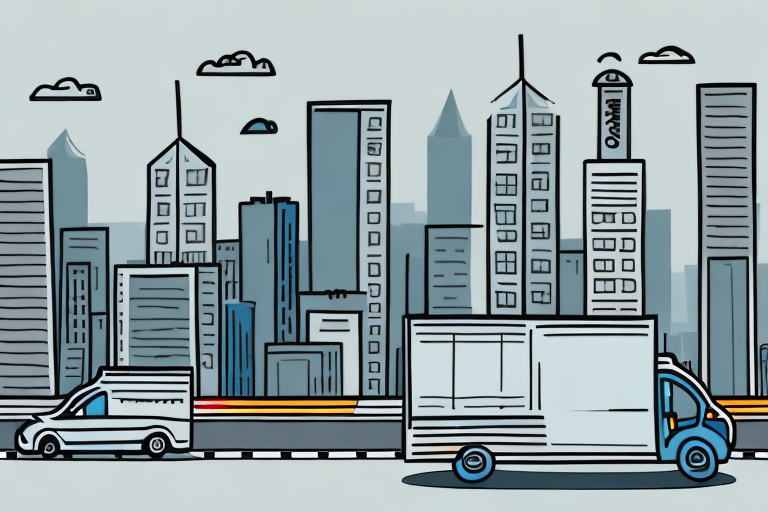Challenges in Last Mile Deliveries
Last mile deliveries represent the final step in the logistics process, transporting goods from a distribution center to the end consumer. This phase is often the most challenging due to several factors:
- Lack of Standardization: Residential and commercial addresses can vary widely, making it difficult to locate delivery points efficiently. According to a PwC report, addressing inefficiencies account for up to 53% of total delivery costs.
- Traffic Congestion: Urban areas often experience heavy traffic, causing delays and missed delivery windows. The UK Department for Transport estimates that traffic congestion costs logistics companies billions annually.
- Inventory Management: Handling numerous parcels, especially those requiring specialized care like hazardous or perishable goods, adds complexity to the delivery process.
- Rising E-commerce Demand: The surge in online shopping has intensified the pressure on logistics providers to meet higher delivery expectations, including faster delivery times and real-time tracking.
Importance and Benefits of Optimizing Last Mile Deliveries
Optimizing last mile deliveries is crucial for businesses aiming to enhance operational efficiency and customer satisfaction. The benefits include:
- Increased Customer Satisfaction: Timely and reliable deliveries lead to higher customer retention rates. A Deloitte study found that 75% of customers prioritize reliable delivery when choosing a retailer.
- Cost Reduction: Efficient routing and inventory management can significantly lower operational costs. Companies can save up to 30% on delivery costs through route optimization alone.
- Enhanced Sustainability: Optimized delivery routes reduce fuel consumption and carbon emissions, contributing to environmental sustainability.
- Real-Time Tracking: Providing customers with accurate delivery updates enhances transparency and trust, reducing the likelihood of missed deliveries.
Strategies and Technologies to Streamline Last Mile Deliveries
Route Optimization Software
Implementing advanced routing software helps in planning the most efficient delivery paths, minimizing travel time and fuel usage. Features to look for include real-time traffic updates, integration with inventory systems, and customizable delivery schedules.
Data Analytics
Leveraging data analytics allows companies to analyze delivery patterns and identify inefficiencies. Predictive analytics can forecast potential delays caused by factors like weather or traffic, enabling proactive adjustments to delivery routes.
Automation and Robotics
Adopting automated delivery systems, such as drones and autonomous vehicles, can significantly speed up the delivery process and reduce reliance on human labor. For instance, Amazon's drone delivery initiative aims to deliver packages within 30 minutes.
Multi-Modal Transportation
Utilizing various modes of transportation, including bikes and electric vehicles, particularly in urban settings, can bypass traffic congestion and reduce environmental impact.
Managing Customer Expectations for Enhanced Satisfaction
Effective management of customer expectations is vital for ensuring satisfaction during last mile deliveries. Key practices include:
- Clear Communication: Provide accurate delivery windows and promptly inform customers of any changes or delays.
- Real-Time Tracking: Offering tracking features allows customers to monitor their packages, enhancing trust and transparency.
- Flexible Delivery Options: Allowing customers to choose preferred delivery times or locations can improve their overall experience.
Case Studies and Future Trends in Last Mile Deliveries
Successful Implementations
Several companies have successfully streamlined their last mile delivery processes:
- Amazon: Utilizes drones and a vast network of logistics hubs to offer rapid delivery services.
- UPS: Employs electric bikes in congested urban areas, enhancing delivery efficiency while reducing environmental impact.
Future Trends
The future of last mile deliveries is poised for significant advancements, including:
- Autonomous Vehicles: Self-driving delivery trucks and robots are expected to become more prevalent, reducing delivery times and costs.
- Artificial Intelligence: AI-driven systems will further enhance route optimization and predictive analytics.
- Sustainability Focus: There will be a continued emphasis on reducing the carbon footprint through the use of electric vehicles and eco-friendly delivery practices.
Environmental Impact of Optimized Last Mile Deliveries
Streamlining last mile deliveries has a positive effect on the environment by:
- Reducing Carbon Emissions: Efficient routing and the use of electric vehicles lower greenhouse gas emissions.
- Minimizing Fuel Consumption: Optimized routes decrease the total distance traveled, conserving fuel resources.
- Lowering Pollution Levels: Fewer delivery vehicles on the road lead to reduced air and noise pollution in urban areas.
According to the Environmental Protection Agency, the transportation sector is a significant contributor to carbon emissions, and improvements in last mile logistics can play a crucial role in mitigating this impact.
Conclusion: Investing in Streamlined Last Mile Deliveries is Essential for Business Success
Optimizing last mile deliveries is not just a logistical necessity but a strategic imperative for businesses aiming to thrive in a competitive market. The benefits of streamlined last mile processes include enhanced customer satisfaction, reduced operational costs, and a positive environmental impact. By leveraging advanced technologies, data analytics, and sustainable practices, companies can overcome the inherent challenges of last mile deliveries. Investing in these areas ensures improved efficiency, greater customer engagement, and sustained business growth.




















